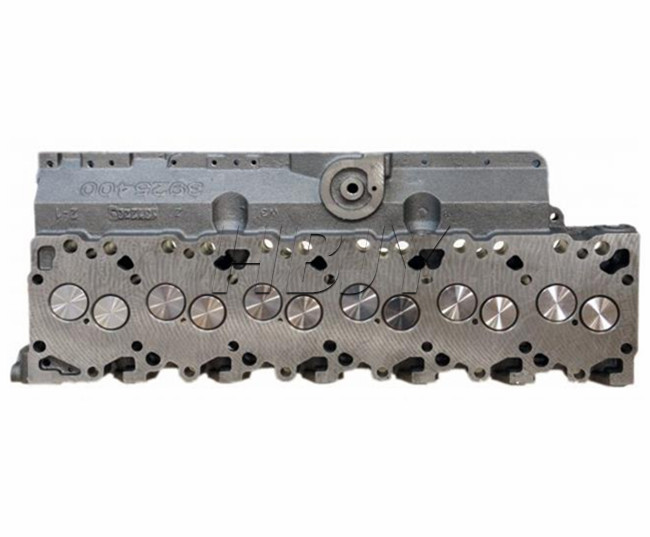In the four-stroke engine, an intake passage and an exhaust passage called an exhaust passage are disposed on the Cummins Cylinder Head, and an intake valve and an exhaust valve are respectively provided. The cylinder head is made of aluminum alloy under low pressure casting. After the convex and die of the inlet and exhaust passages are fixed, the inner cavity of the intake and exhaust passages will not change unless the convex cavity is worn. In the market, the inlet and exhaust passages of the cylinder head are small, and the inner surface of the cavity is very rough, so that the airflow of the intake and exhaust is not smooth, and even the resistance is formed, which affects the normal performance of the engine power. How to effectively identify it? ? After years of practice and experience, Cummins Cylinder Head Suppliers has explored a practical and simple method for identification.
Decompose the engine, remove the cylinder head or fittings, and do not disassemble the valve and other parts on the assembly. Keep the air inlet or exhaust port up to the iron block at the right angle so that the air inlet or exhaust port is parallel. A 20 mL to 50 mL medical syringe is filled with metered gasoline or tap water from the air inlet or exhaust port to fill the air passage. The amount of the added solution is compared with the qualified inlet and outlet volume. If the volume is less than 10 mL 3 to 15 mL 3 , it can be confirmed that the airway cavity is small. Tap water is easy to rust parts such as valves, and it is recommended to use gasoline to measure.
If there is no medical syringe, clean fine sand can also be used. When the fine sand is flush with the airway mouth, the weight is poured out, and then compared with the fine sand weight of the airway volume of the fake inferior component. If the sand is light in the airway , can be determined that its volume is too small.
The cylinder head of aluminum alloy casting cannot have a smooth inner wall of the air passage, so it must be ground. With the advancement of the production process, most of the mass production uses mechanical grinding technology to replace the original heavy manual grinding. In Japan, this process is called mirror grinding. However, maintenance personnel often use manual grinding of the air passage, and must be very careful. Try not to make the grinding tool touch the valve valve on the valve seat, otherwise it will affect the valve seal.
Regardless of the method used, it is necessary to blow off the residual sand and debris in the air passage with high-pressure air after the operation, and then flush the air passage with clean gasoline to avoid affecting the sealing of the valve and the valve seat. This point must be highly valued.
